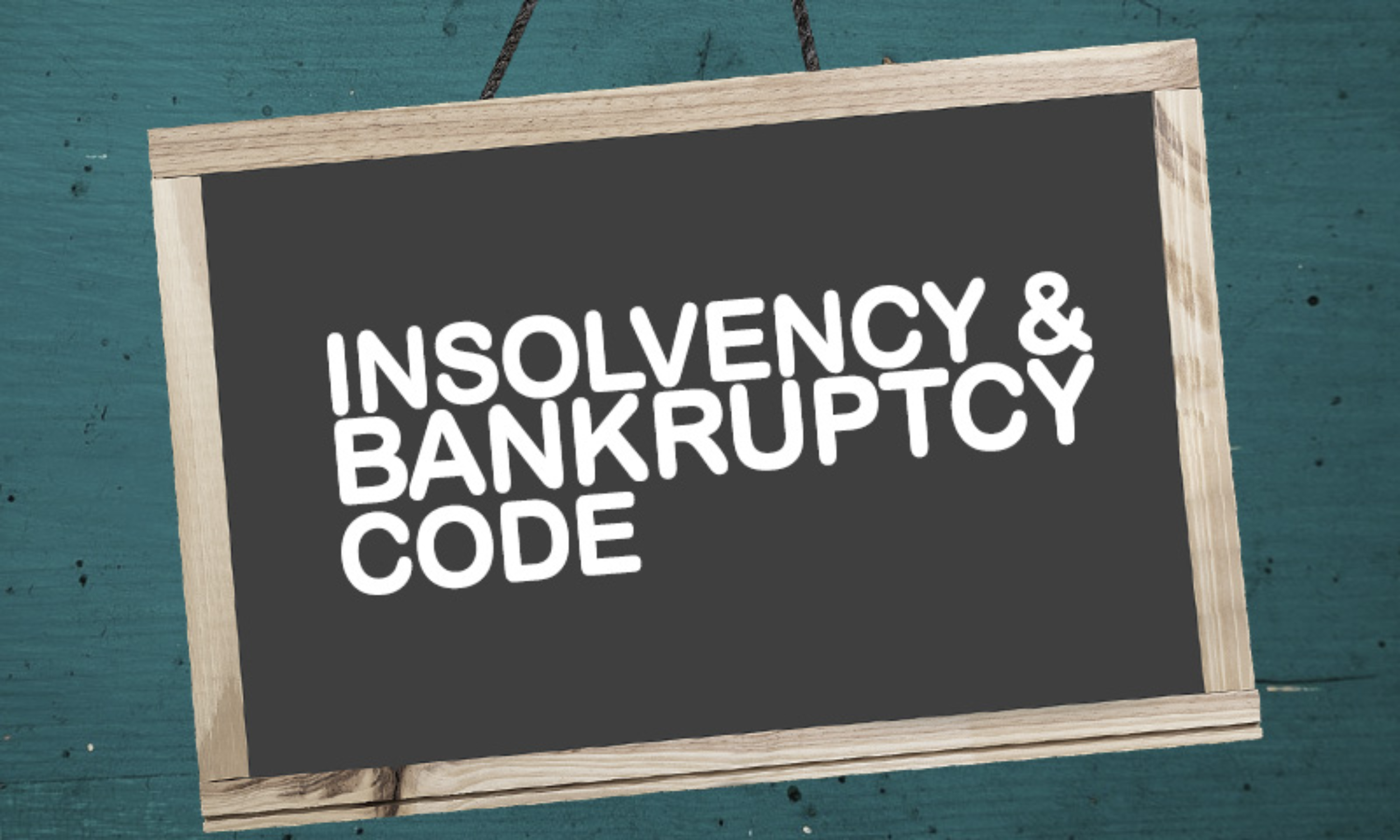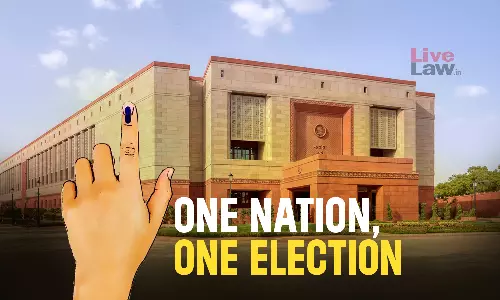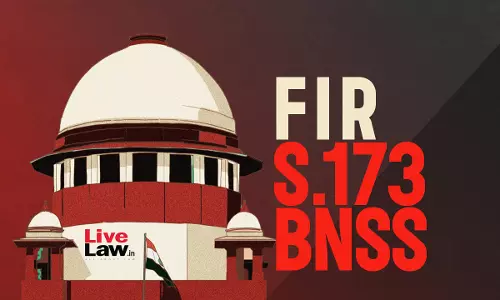Applicability Of Section 10A, IBC To Part Default During Suspension Period ;An Analysis

On 5 June, 2020, the Government of India introduced Section 10A to the Insolvency and Bankruptcy Code, 2016 by the way of an ordinance which barred filing of any application for initiation of CIRP for default occuring during a certain period. The rationale behind the insertion of this section was to prevent the interests of corporate debtors who suffered economic crisis due to...
On 5 June, 2020, the Government of India introduced Section 10A to the Insolvency and Bankruptcy Code, 2016 by the way of an ordinance which barred filing of any application for initiation of CIRP for default occuring during a certain period. The rationale behind the insertion of this section was to prevent the interests of corporate debtors who suffered economic crisis due to the national wide lockdown imposed in view of COVID-19.
While introduction of this provision was a necessary measure, it has led to various questions of law which require judicial interpretation. One such pertinent question is regarding the applicability of this section to the cases of continuing default. While more than two years have passed since the insertion of this section and the interpretation on this issue seems to be still evolving. The present article seeks to enumerate the interpretation given by the courts and tribunals in such cases and attempts to critically analyse the same.
Section 10A, IBC And Court’s Interpretation
Section 10A of IBC, 2016 states that no application for the initiation of CIRP of a corporate debtor shall ever be filed for any default arising on or after 25.03.2020 for a period of six months. This period of six months was later extended by six more months and hence as per Section 10A of the code, no application for initiation of CIRP of the corporate debtor could be filed for any default occurring from 25.03.2020 to 25.03.2021.
The provision was not a part of the original legislation but was later incorporated into the IBC by the way of an Ordinance promulgated on 5 June, 2020 which was later replaced by an Amendment Act of 2020. The principle reasons behind the enactment of this section were the financial hardship suffered by corporate entities due to economic distress caused by COVID – 19 and the unavailability of adequate number of resolution applicants which could rescue the corporate person who could default in view of the extraordinary hardships caused by economic slowdown. The provision is applicable only for defaults by the corporate debtor and the defaults during the prohibited period are not considered for calculation of threshold limit of one Crore under the Code.
In the case of Ramesh Kymal, the court had to consider the applicability of the provisions of Section 10A in respect of defaults occurring after 25 March, 2020 but for an application filed prior to the date on which the provision came into force i. e, 5 June, 2020. It held that it was in view of the object of the Code (revival of the corporate debtor) that the said provision was introduced in the Insolvency regime and therefore irrespective of the date of filing of an application, no application shall be accepted for the defaults occurring from 25 March, 2020 to 25 March, 2021. However, for the benefit to be claimed under Section 10A, there must be a clear default during the prohibited period.
Court stated that expression “no application shall ever be filed” indicates a bar on the institution of any application for the commencement of CIRP in respect of the default committed during the said period and that the substantive part of the provision is to be harmoniously construed with its proviso and explanation. This has also been reiterated by NCLAT in its decision in B Sreekala vAl Sadiq Sweets wherein it was held that a blanket ban is given under Section 10A. NCLAT interfered with the decision rendered by the Adjudicating Authority which held that the application filed for the initiation of CIRP was maintainable in view of the fact that the default took place before the pandemic and had resulted into a financial crisis. The Adjudicating Authority further held that holding otherwise would be contrary to the intention of executive for adding this provision to the Code.
Continuing Default And Section 10A, IBC
The law regarding applicability of Section 10A, IBC on the cases of continuing default is still unsettled. Continuing default herein refers to defaults due to non-payment of dues which occur periodically. An analysis of various decisions shows that the courts and tribunals following the judgment of Apex Court in Ramesh Kymal have held that since Section 10A provides for a blanket ban, no application can ever be filed if the default takes place during the said period.
In addition to the above, the application for CIRP has also been denied in view of the fact that IBC is not a tool for recovery but it is a legislation for resolution of corporate debtor. In Cooperative Rabobank U.A. Vs. CoffeeDay Global Limited, an application was filed for defaults occurring during suspension period and continuing thereafter. The court held that since the creditor is trying to use to forum for debt recovery, the application for CIRP could not be permitted. Further, the hardships suffered by the debtor in light of the COVID-19, its financial position and the bona fide attempt on its part was also considered to deny the initiation of CIRP proceedings against the corporate debtor.
In many of these cases, although the default occurred during the suspension period, however, the acknowledgement of debt in facts and law was considered as a crucial point for determining admission of CIRP proceedings against the corporate debtor. The acknowledgement of debt is important since it is a settled law that debt becomes due and payable both in facts and in law when acknowledged by the Corporate Debtor and therefore the date of such acknowledgement is treated as the date of default. In Rubra Buildwell Constructions Pvt. Ltd. Versus PSA Impex Pvt. Ltd, NCLT admitted the petition under Section 9 of the IBC, 2016 for a default that occurred on 31.03.2020. This was in view of a letter dated 03.06.2021 vide which the corporate debtor acknowledged the outstanding debt and stated its inability to pay in view of the financial distress being suffered by the corporate debtor. It was held that in view of the letter, the date of default shall be considered to be 03.06.2021 and therefore the case would not fall under Section 10A. Similarly, in H.S. Syndicate Vs. Real ValuePromoters Private Limited, IDBI Bank Limited Vs. AuromatrixHotels Private Limited and Sulpa International Vs. Savute Textiles Private Limited the NCLT considered the records of admission of liability and default in the repayment of the amount to financial creditor. It was held that Tribunal only had the option to proceed with case and therefore, CIRP proceedings had to be allowed against the corporate debtor.
In Ultra Tech Cement Limited vs Darshan Developers Private Limited, the Court also considered that the corporate debtor never intended to make the default good and was merely taking the defence of a lockdown situation for avoiding liability to pay and that in view of unequivocal acceptance by the corporate debtor, initiation of CIRP could be admitted against the corporate debtor.
Analysis
A perusal of the above decisions shows us that Courts and Tribunals have been following the literal rule of interpretation for interpreting the applicability of Section 10A to the defaults in the said period. It is in line with the Apex Court’s decision in Ramesh Kymal that the term “no application shall ever be filed” has been considered as a blanket ban for initiation of CIRP against a corporate debtor during the suspension period. This interpretation of the court, however, seems to be narrow and is not in line with the object that the Code seeks to attain. This interpretation is very detrimental to the interests of the creditors in the cases wherein a part of default occurred during the prohibited period and in view of the same, no application for initiation of CIRP against the Corporate Debtor can ever be filed by the Creditors.. The courts have failed to take such issues into consideration and an arbitrary protection has been given to the debtors by virtue of Section 10A, IBC.
In Al Sadiq Sweets v. Krisenter Impex (P.) Ltd, NCLT Kochi however, considered this situation. The NCLT herein observed that the notification for application of Section 10A was only for the default occurring during the prohibited period and that the provision is not applicable to the default which took place before the pandemic and is not a result of the financial crisis caused by COVID induced lockdown. The NCLT observed that imposing this blanket ban would be contrary to the object for this the provision was added. However, the same was overturned by NCLAT which held that the CIRP could not be initiated against the corporate debtor.. In Ramesh Kymal also it was argued by the appellants that for testing the applicability of Section 10A, the court must examine the facts of a case and deduce that whether the default was attributable to COVID-19 pandemic. The Creditors wanted a purposive interpretation by the Court. However, the same was not considered by court and it was held that an adoption of the construction suggested by the Appellant would defeat the underlying object of Section 10A, IBC.
It can be seen that in it is in light of this literal interpretation adopted by the Court and due to the Code not being a recovery legislation that it has been held that a blanket ban would apply. The corporate debtor is therefore left with no option but to resort to other forms of recovery which have proved to be inefficient with time. In such cases however, acknowledgement of debt is taken as the best defence since it is a well settled law that debt must become due and payable in both law and facts and that the date of acknowledgement of default becomes date of default.
Comments And Suggestions
The approach of Courts regarding applicability of Section 10A seems to be very stringent and not in line with the object of the provision. This approach, must not be resorted to since it does more harm than benefit to the economy as a whole. The provision has become a shelter under which various corporate debtors are maliciously seeking a protection from the provisions of Corporate Insolvency process. This leads to an increasing problem of Non Performing Assets in the society and discourages lending by the entities who fear that their dues may never be recovered in case a pandemic situation arises again.
It is to be noted that problem of stressed assets is one of the biggest problems faced by the Indian Economy and the reasons behind the same include availability of credit in the economy, change in monetary policy , natural calamities, slowdown of certain sectors etc. As per the official data published by the Reserve Bank of India, the Gross NPA of all the scheduled commercial banks was Rs 742397.15 crores for year 2022, for 835051. 42 crores for 2021, 896082.52 crores for 2020 and 933608.86 crores for 2019. These figures reflect that there is huge amount of the stressed assets which is affecting the profitability and the efficiency of the banking sector thereby affecting economy as a whole. The impact of non-application of Section 10A will be reflected in the subsequent banking figures since the blanket ban under Section 10A of the IBC, 2016 has disabled the creditors from initiating corporate insolvency process against the debtor and other mechanisms such as initiation of recovery proceedings under SARFAESI and the Recovery of Debt and Bankruptcy Act are available, they face their own sets of challenges.
It is to be kept in mind that the resolution of problem of increasing NPAs was one of the main objects behind the enactment of the Insolvency and Bankruptcy Code. It was this Code that led to establishment of certain institutions which has rendered an effective resolution of the problem of growing distressed assets in the Indian economy. Official data released by IBBI suggests that realization of admitted claims for the first time is less than even the liquidation value and this is very worrisome. This is a concern because the code seeks maximization of the value of assets, but with this rate of recovery, the effectiveness of the Code is questionable.
The lenders especially in the cases of partial default taking place during this period are at a disadvantaged position. The Apex Court in Ramesh Kymal seems to be diverted from its own decision wherein it held that the provision has to be interpreted in view of the extraordinary circumstances in which it was made. A purposive interpretation can be given and determination must be left at the discretion of the Adjudicating Authority which could consider the facts of the case and decide whether the default was as a result of COVID-19 pandemic. While the rationale of the government behind the Code is well understood and is in view of the public policy to protect the enterprises which had been facing financial crisis due to the pandemic, barring of initiation of CIRP forever is not discouraged.
If the cases are considered on facts, it would lead to preservation of the interests of not only the debtors but also the creditors. The objective of the Code is not to serve as a recovery mechanism, but resolution for the corporate debtor. However, the impact of the provision needs to be considered as a whole and in view of the fact whether any actual problem is being faced by the debtor to repay or it is merely taking the shelter of Section 10A to escape its liability to repay its debt.
Section 10A was made with the objective of providing relief to the corporate debtors hit by the pandemic induced lockdown. It bars the initiation of CIRP for one year in view of the economic distress suffered by the Corporate Debtor. However, the courts have plainly interpreted the same. This has led to various issues such as inclusion of amount of default occurring during the suspension period to match the threshold limited provided under the Code, issue of retrospective operation of the said provision etc. One of the issues is regarding the applicability of the blanket ban imposed on the part defaults occurring during the suspension period. It is suggested that the adoption of a purposive interpretation and consideration of the facts of each case to determine cause of default before applying Section 10A blindly to every default taking place in this period. While code is not a recovery mechanism, the objects behind the enactment of the code shall be rendered infructuous if the said interpretation is not adopted.
Views are personal.




